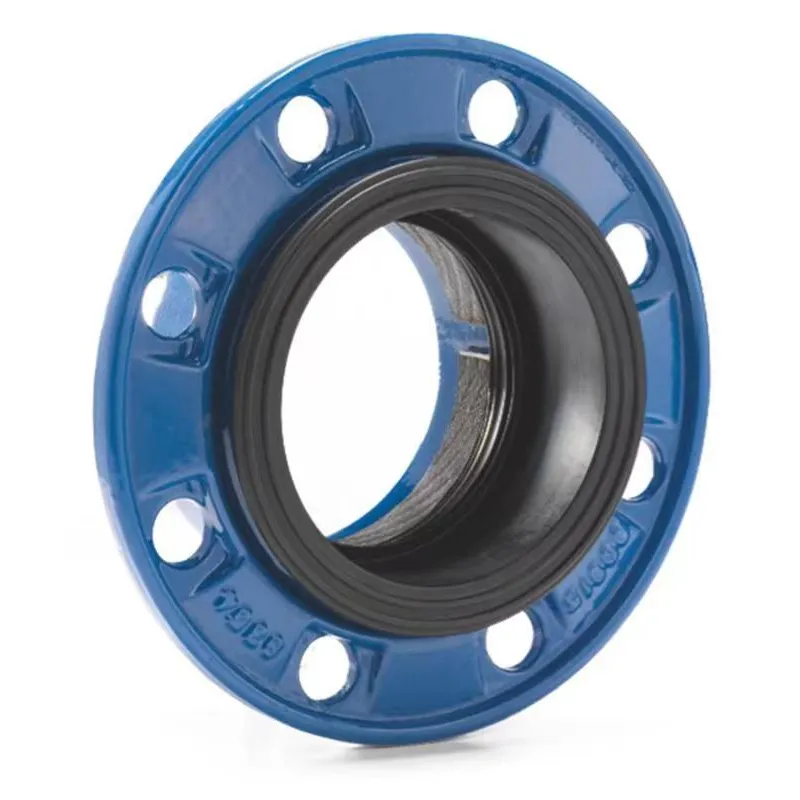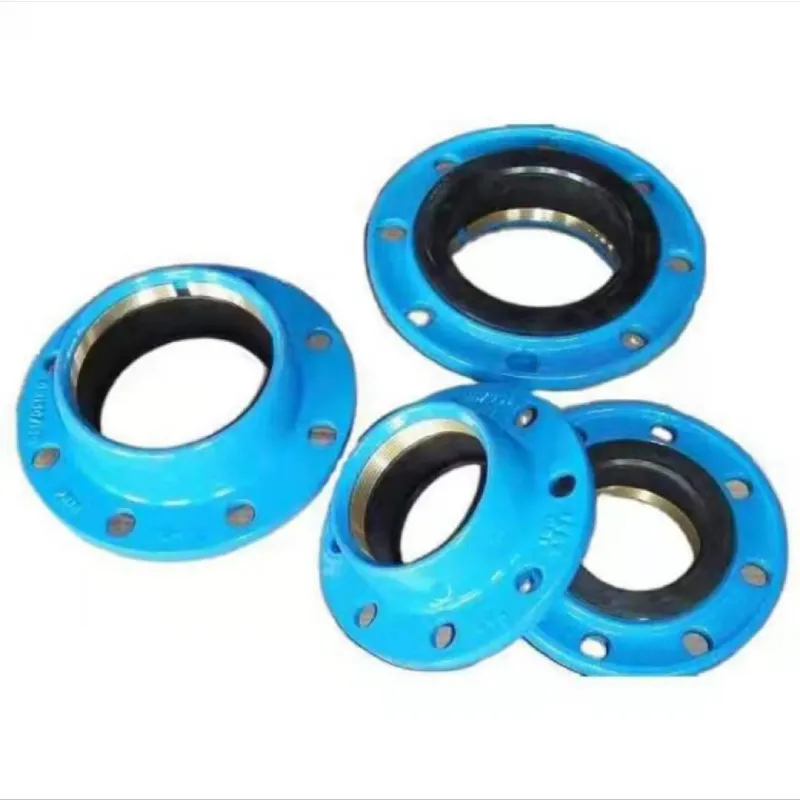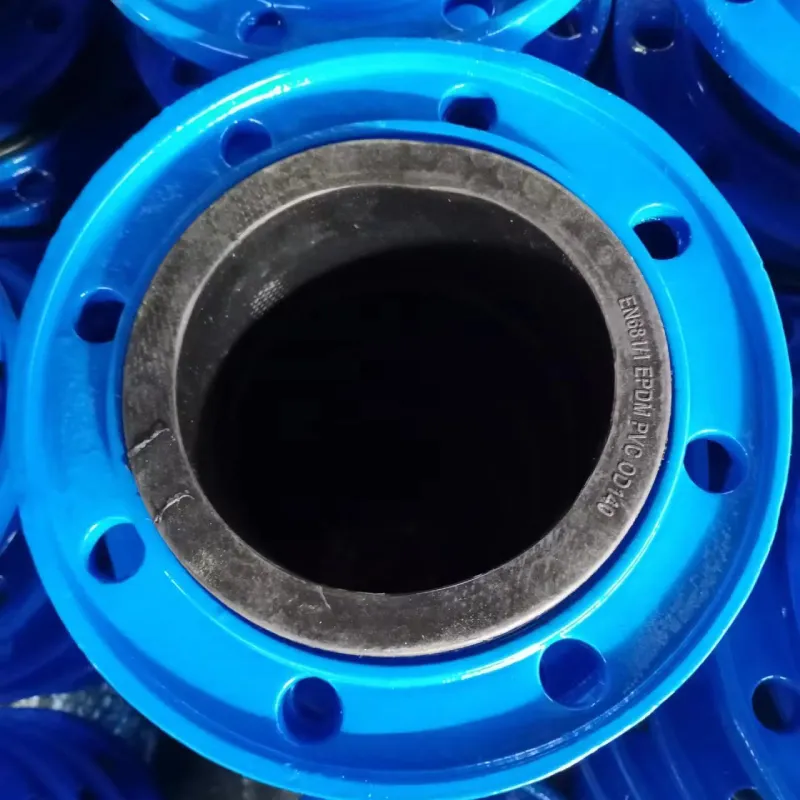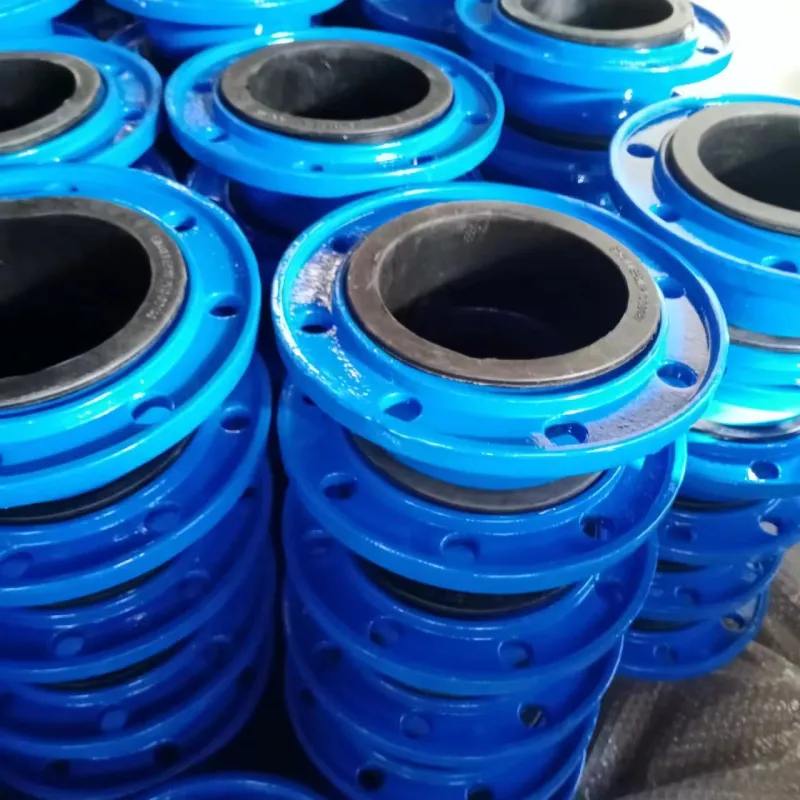Premium Saddle Clamp Valve | Secure & Leak-Proof Pipeline Connections
Understanding the Critical Role of Saddle Clamp Valves in Modern Infrastructure
In the intricate landscape of industrial piping and fluid conveyance systems, efficiency, reliability, and ease of maintenance are paramount. A pivotal component ensuring these qualities is the saddle clamp valve. These versatile devices are engineered to create a secure, leak-proof branch connection to an existing pipeline, eliminating the need for complex and disruptive pipe cutting. This article delves into the technical specifications, application scenarios, and strategic advantages of these essential components, catering to the exacting demands of B2B decision-makers and engineering professionals.
From municipal water networks to advanced petrochemical facilities, the ability to quickly and securely tap into a main line without extensive downtime is a significant operational advantage. The innovative design of the saddle clamp valve facilitates this, offering robust performance, extended service life, and adherence to stringent industry standards.
Industry Trends and Market Dynamics
The global infrastructure sector is experiencing substantial growth, driven by urbanization, industrial expansion, and the need for upgraded aging networks. This trend directly impacts the demand for reliable and adaptable piping solutions. Key drivers influencing the market for the saddle clamp valve include:
- Sustainable Infrastructure Development: A focus on durable, long-lasting materials and leak prevention to conserve resources and reduce environmental impact.
- Smart Water Management: Integration of advanced monitoring and control systems requires flexible connection points, where a saddle clamp valve excels.
- Non-Revenue Water Reduction: Minimizing leaks in water distribution systems through efficient tapping solutions is a top priority for municipalities globally.
- Material Innovation: Increased adoption of advanced materials like Ductile Cast Iron for enhanced strength, corrosion resistance, and longevity.
- Rapid Deployment Solutions: The need for quick and minimally disruptive installation methods to reduce project timelines and operational costs.
These trends underscore the critical evolution of piping accessories towards higher performance, greater adaptability, and simplified installation protocols, making the saddle clamp valve an indispensable tool.
Technical Specifications and Parameters
The efficacy of any pipe fitting lies in its adherence to rigorous technical specifications. A well-engineered saddle clamp valve is designed for specific pressure ratings, temperature ranges, and pipe materials, ensuring optimal performance and safety across diverse applications. For instance, the Ductile Cast Iron Quick Flange Adaptor for PVC/PE Pipe is specifically crafted to provide a robust, long-lasting connection.
Table 1: Typical Saddle Clamp Valve Product Specifications
| Parameter | Specification | Details / Standards |
|---|---|---|
| Body Material | Ductile Cast Iron (GGG50) | EN 1563, ASTM A536 Grade 65-45-12 |
| Coating | Fusion Bonded Epoxy (FBE) | EN 14901, AWWA C213 (Min. 250 microns) |
| Gasket Material | EPDM or NBR | WRAS, NSF 61 approved (for potable water) |
| Bolts/Nuts | Stainless Steel (A2/A4) or Galvanized Carbon Steel | ISO 3506, ASTM A307 Gr. B |
| Working Pressure | PN10, PN16, PN25 | Up to 25 bar, depending on size and application |
| Temperature Range | -20°C to +80°C (EPDM), -10°C to +60°C (NBR) | Specific to gasket material |
| Pipe Compatibility | PVC, PE, Ductile Iron, AC, Steel, GRP | Specific pipe ODs, e.g., DN50 to DN600 |
| Testing Standards | ISO 2531, EN 545, EN 598, AWWA C110/C153 | Hydrostatic pressure testing, dimensional checks |
These specifications highlight the robust design and material choices that ensure the longevity and reliable performance of a modern saddle clamp valve in demanding environments. Adherence to international standards like ISO and ANSI ensures global interoperability and trust.
Manufacturing Process Flow for Saddle Clamp Valves
The manufacturing of a high-quality saddle clamp valve is a multi-stage process, meticulously controlled to ensure product integrity and performance. Our process emphasizes precision, material quality, and stringent testing, delivering products with an extended service life typically exceeding 50 years under normal operating conditions.
Schematic Steps of Production:
- Material Selection & Preparation: Begins with high-grade Ductile Cast Iron (e.g., GGG50), selected for its superior strength and ductility compared to grey cast iron. Raw materials are inspected for chemical composition and mechanical properties.
- Casting: Precision sand casting or shell molding techniques are employed to form the main body components of the saddle clamp valve. This stage is critical for achieving the correct geometry and structural integrity.
- Deburring & Shot Blasting: Cast components undergo deburring to remove any rough edges, followed by shot blasting to clean surfaces and prepare them for subsequent coating processes, ensuring optimal adhesion.
- CNC Machining: Critical dimensions, bolt holes, and sealing surfaces are machined using advanced CNC equipment to exact tolerances. This ensures a perfect fit and leak-proof seal.
- Surface Treatment (Fusion Bonded Epoxy Coating): The ductile iron body is heated and coated with a fusion-bonded epoxy (FBE) layer, providing exceptional corrosion resistance, crucial for longevity in harsh environments like buried pipelines in water supply & drainage or petrochemical industries. This meets standards such as EN 14901 and AWWA C213.
- Gasket & Fastener Preparation: High-performance EPDM or NBR rubber gaskets are molded to specification, ensuring flexibility and chemical resistance. Bolts, nuts, and washers are typically stainless steel or galvanized carbon steel for corrosion protection.
- Assembly: Components are carefully assembled, ensuring correct alignment and torque settings for fasteners to achieve the required clamping force and seal integrity.
- Pressure Testing & Quality Control: Each assembled saddle clamp valve undergoes rigorous hydrostatic pressure testing (e.g., at 1.5 times the nominal pressure) to verify its structural integrity and leak-tightness, adhering to ISO 2531 and EN 545. Dimensional checks and visual inspections are performed at every stage.
- Packaging & Dispatch: Products are carefully packaged to prevent damage during transit, ready for global distribution to target industries such as petrochemical, metallurgy, and water supply & drainage.
This meticulous process ensures that each saddle clamp valve delivers superior performance, contributing to energy saving by preventing leaks and offering outstanding corrosion resistance throughout its operational lifespan.

Image 1: Illustrative diagram of a saddle clamp valve for pipe connection.
Application Scenarios and Industry Benefits
The adaptability of the saddle clamp valve makes it invaluable across a multitude of industrial and municipal applications. Its primary function is to facilitate secure branch connections without interrupting the main pipeline flow, offering significant operational benefits.
- Water Supply & Drainage: Essential for connecting service lines, fire hydrants, or auxiliary pipelines to main water distribution networks. They allow for new connections or repairs with minimal disruption to water service.
- Petrochemical & Oil & Gas: Used for creating tapping points for instrumentation, sampling lines, or temporary connections on existing process pipelines carrying various fluids, including hydrocarbons. The robust construction handles demanding environments.
- HVAC & Industrial Utilities: Ideal for branching off chilled water lines, steam lines (with appropriate material selection), or compressed air systems in large industrial facilities.
- Mining & Wastewater Treatment: Provides reliable connections for process water, slurry lines, and effluent discharge systems where pipe material compatibility and corrosion resistance are critical.
In these scenarios, the rapid installation and secure seal provided by a saddle clamp valve directly translate to reduced downtime, lower labor costs, and improved system integrity. The focus on energy saving is also significant; by preventing leaks at connection points, these valves contribute to more efficient fluid transport and reduced pumping energy consumption.
Technical Advantages of Our Saddle Clamp Valves
Our ductile cast iron saddle clamp valve products offer distinct technical advantages that set them apart in the market, addressing key challenges faced by engineers and project managers:
- Unmatched Corrosion Resistance: The fusion-bonded epoxy coating (FBE) applied to our ductile iron bodies provides superior protection against corrosion, even in aggressive soil conditions or when handling corrosive media, significantly extending the product’s service life.
- Exceptional Durability and Strength: Manufactured from GGG50 Ductile Cast Iron, our products exhibit high tensile strength and impact resistance, ensuring robust performance under various operational pressures and mechanical stresses.
- Leak-Proof Seal Integrity: Precision-machined surfaces coupled with high-quality EPDM or NBR gaskets create a reliable, long-lasting seal, virtually eliminating leakage and associated water losses (critical for non-revenue water initiatives).
- Ease and Speed of Installation: The clamp-on design allows for quick and straightforward installation on existing pipelines without the need for extensive pipe preparation or specialized welding, drastically reducing labor time and potential disruption. This is especially true for a saddle clamp with base design for stable seating.
- Versatility Across Pipe Materials: Designed to adapt to a wide range of pipe materials including PVC, PE, Ductile Iron, AC, Steel, and GRP, making them highly versatile for varied infrastructure projects.
- Cost-Effectiveness: The combination of long service life, minimal maintenance, and efficient installation results in a lower total cost of ownership over the product's lifespan, providing substantial ROI for B2B clients.
- Operational Flexibility: Enables hot tapping (tapping into a live pipeline) capabilities, allowing for system expansions or modifications without shutting down the entire network, a crucial advantage in critical applications.

Image 2: Close-up of a ductile cast iron saddle clamp valve, highlighting its robust construction.
Vendor Comparison: Choosing the Right Partner
Selecting the right supplier for saddle clamp valve products is as critical as the product itself. A comprehensive vendor comparison should evaluate not just product specifications, but also manufacturing expertise, quality certifications, customization capabilities, and post-sales support.
Table 2: Key Criteria for Saddle Clamp Valve Vendor Comparison
| Criteria | Leading Vendor (e.g., Us) | Standard Vendor | Budget Vendor |
|---|---|---|---|
| Material Quality | GGG50 Ductile Iron (EN 1563) | GGG40 Ductile Iron or Grey Iron | Mixed Iron Grades |
| Coating Quality | FBE (EN 14901, AWWA C213) | Epoxy paint or thin FBE | Basic paint or no coating |
| Testing & Certifications | ISO 9001, EN 545, WRAS/NSF 61, Hydrostatic & Torque Tested | Basic ISO, limited testing | Self-certified or no relevant certs |
| Customization Options | Extensive (materials, sizes, coatings, OEM) | Limited (standard sizes/coatings) | Minimal to none |
| Lead Time Consistency | Consistent, project-specific scheduling | Moderate variability | Highly variable, often extended |
| After-Sales Support | Technical assistance, warranty, parts | Limited support | Virtually no support |
Choosing a vendor that consistently meets the "Leading Vendor" criteria ensures not only superior product performance but also long-term project success and reduced operational risks. While initial costs might vary, the total cost of ownership with high-quality components and reliable support is invariably lower.
Customized Solutions for Unique Requirements
Recognizing that no two projects are identical, we offer extensive customization options for our saddle clamp valve range. This flexibility ensures that our products seamlessly integrate into unique system designs and operational parameters, optimizing performance and cost-efficiency.
- Material Adaptation: Beyond standard ductile iron, options for specialized alloys or internal linings can be explored for highly corrosive or abrasive media.
- Pressure and Temperature Ratings: Engineering solutions for applications requiring higher than standard pressures or extreme temperature resistance.
- Pipe Compatibility: Designing saddle clamp valve units for non-standard pipe diameters or exotic pipe materials, ensuring a perfect fit and seal. This could involve special designs for a `saddle clamp with base` for specific pipe types.
- Coating Systems: Providing bespoke internal and external coating solutions (e.g., specialized anti-fouling or chemical-resistant coatings) tailored to specific fluid characteristics and environmental conditions.
- Connection Types: Offering variations in branch outlet connections, including flanged (ANSI, DIN, JIS), threaded (NPT, BSPT), or specific quick-connect mechanisms to integrate with existing infrastructure.
- Valve Integration: Customization to integrate specific valve types (e.g., ball, gate, butterfly) directly onto the saddle clamp body for compact and efficient tapping solutions.
Our engineering team collaborates closely with clients from conceptualization to deployment, providing technical drawings, material certifications, and performance guarantees for all custom saddle clamp valve solutions.
Application Case Studies
Real-world applications best demonstrate the effectiveness and reliability of our saddle clamp valve products. Below are examples of how our solutions have delivered significant value to our clients.
Case Study 1: Municipal Water Main Expansion
A large metropolitan water authority needed to add new service connections to an existing DN400 (16-inch) ductile iron water main without disrupting service to thousands of residents. Traditional methods would have required a costly and time-consuming shutdown. By deploying our FBE-coated ductile iron saddle clamp valve with a PN16 rating, the authority was able to perform hot taps and establish new branches rapidly. The installation of 12 such valves across the network was completed in less than half the time estimated for traditional methods, resulting in 40% cost savings on labor and zero service interruptions. Customer feedback highlighted the ease of installation and the robust, leak-free performance, underscoring the product's reliability and contribution to public service continuity.
Case Study 2: Industrial Cooling Water System Upgrade
A major manufacturing plant required upgrading its cooling water system by adding new cooling towers and associated pipework. The existing main cooling line was 24-inch steel, operating at a high flow rate. The challenge was to create multiple new connections without a full plant shutdown, which would incur massive production losses. We provided custom-designed saddle clamp valve units with specialized internal coatings suitable for the cooling water chemistry and stainless steel fasteners for enhanced corrosion resistance. The hot tapping capability allowed the plant to make all necessary connections while maintaining full production, saving an estimated $1.2 million in potential downtime costs. The long-term performance and durability of the valves have ensured stable operation of the upgraded system.

Image 3: A saddle clamp valve in a typical industrial pipeline application.
Ensuring Trust: FAQ, Lead Time, Warranty, and Support
Frequently Asked Questions (FAQ)
Q1: What pipe materials are compatible with your saddle clamp valve?
A1: Our saddle clamp valves are designed for broad compatibility, including PVC, PE, Ductile Iron, Asbestos Cement (AC), Steel, and GRP pipes. Specific models may be optimized for certain pipe types; please consult our technical data sheets for detailed compatibility.
Q2: What is the typical service life of a ductile cast iron saddle clamp valve?
A2: With proper installation and under normal operating conditions, our ductile cast iron saddle clamp valves, especially with FBE coating, are engineered for a service life of 50 years or more. This is backed by rigorous material selection and manufacturing standards.
Q3: Can your saddle clamp valves be used for hot tapping applications?
A3: Yes, our saddle clamp valves are ideally suited for hot tapping, allowing you to create new branch connections on active pipelines without interrupting flow. This capability is a significant advantage for minimizing downtime and maintaining system integrity.
Q4: What certifications do your products hold?
A4: Our manufacturing processes are ISO 9001 certified. Our products adhere to international standards such as EN 545, EN 598, AWWA C110/C153, and for potable water applications, they meet WRAS and NSF 61 requirements.
Lead Time and Fulfillment
We understand the importance of timely delivery for project success. Our standard lead time for common `saddle clamp valve` configurations is typically 3-5 weeks from order confirmation, depending on quantity and specific requirements. For urgent or large-scale projects, we offer expedited production and logistics solutions. We maintain a strategic inventory of popular models and components to facilitate quicker turnaround times when necessary. Our global distribution network ensures efficient delivery to project sites worldwide.
Warranty Commitments
We stand behind the quality and durability of our products. All our saddle clamp valve units come with a standard 12-month warranty against manufacturing defects from the date of installation or 18 months from the date of shipment, whichever comes first. Extended warranty options are available upon request for specific projects, demonstrating our confidence in our engineering and materials.
Customer Support and Technical Assistance
Our commitment extends beyond product delivery. We provide comprehensive after-sales support, including technical assistance for installation, troubleshooting, and maintenance. Our team of experienced engineers is available via phone, email, or on-site visits to ensure optimal performance of our saddle clamp valve products throughout their operational life. We also offer training sessions for client personnel on best practices for installation and maintenance.

Image 4: Disassembled view of a saddle clamp valve showing internal components.
Conclusion
The saddle clamp valve stands as a testament to innovation in pipeline technology, offering indispensable solutions for secure, efficient, and flexible branch connections across critical infrastructure. Its role in reducing downtime, enhancing system reliability, and promoting sustainable water management practices cannot be overstated. As B2B decision-makers and engineers continue to seek robust, long-lasting, and cost-effective solutions, the advanced design, meticulous manufacturing, and comprehensive support surrounding high-quality saddle clamp valves will remain paramount.
By prioritizing superior materials like ductile cast iron, adhering to stringent international standards, and offering extensive customization and dedicated support, we empower our clients to build and maintain resilient infrastructure for generations to come. The future of fluid conveyance relies on components that are not only high-performing but also adaptable, sustainable, and backed by unwavering commitment to quality and service.
References
- ISO 2531:2009. Ductile iron pipes, fittings, accessories and their joints for water applications. International Organization for Standardization.
- AWWA C110/A21.10. Ductile-Iron and Gray-Iron Fittings for Water Applications. American Water Works Association.
- EN 14901:2015. Ductile iron pipes, fittings and accessories. External polyethylene coating for ductile iron fittings. European Committee for Standardization.
- NSF/ANSI 61. Drinking Water System Components – Health Effects. NSF International.
- Water Loss Control in Water Utilities. U.S. Environmental Protection Agency.
-
Durable & Safe 600mm Round Drain Covers | HBYQ Metal SolutionsNewsNov.25,2025
-
Comprehensive Guide to Square to Round Recessed Drain Cover 500mm | Durable & Efficient Drainage SolutionsNewsNov.24,2025
-
Round to Square Manhole Cover – Adaptive Infrastructure Solutions for Modern CitiesNewsNov.24,2025
-
Square to Round Recessed Drain Cover 450mm – Durable & Efficient Drainage SolutionsNewsNov.23,2025
-
Durable Round Inspection Chamber Covers for Urban and Industrial Use | HBYQ MetalNewsNov.23,2025
-
Square to Round Recessed Drain Cover | Durable & Adaptable Drain SolutionsNewsNov.22,2025
-
Durable Square to Round Recessed Drain Cover 300mm | Reliable Drain SolutionsNewsNov.22,2025
